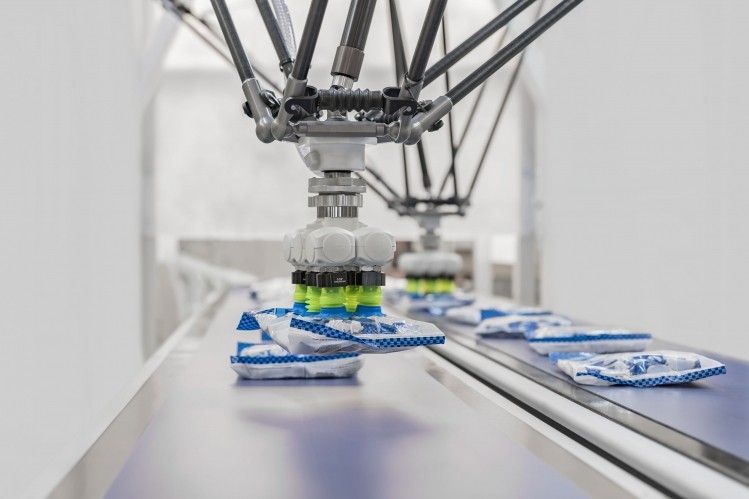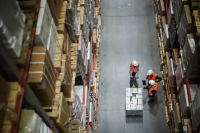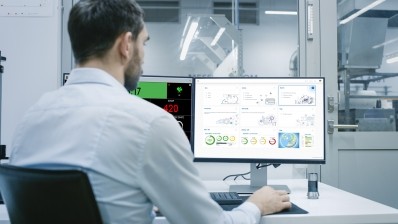A smarter way for manufacturing

With most food and drink businesses producing thousands, if not millions, of units every week, factory managers are under pressure to drive efficiencies. They don’t need reminding that time is money.
The move to Industry 4.0, and greater adoption of lean manufacturing principles, such as kaizen (continuous improvement involving all staff from the CEO to the factory worker), are going a long way to help improve productivity. However, in making plants smarter, good factory design and maintenance should not be underestimated. Construction and layout changes, however small, coupled with strong measures around factory upkeep, can boost output and reduce overheads.
While acknowledging it’s easier to apply a tech-led strategy to new-builds than to retrofit older facilities, Sue Springett, commercial manager at furniture and equipment supplier Teknomek, believes established operations can still make beneficial changes if they take a longer-term view.
“For established sites, technology is yet to meet its full potential as capex costs can appear to be prohibitively high for many in the sector,” she says. “We’ve seen some businesses apply a return-on-investment (ROI) model of 18 months, which can be a barrier to achieving long-term benefits.”
Short-term ROI demands are also a problem encountered by automation specialist ABB. Even though introducing ‘smart’ motors into older food and drink plants can cut their energy use in half, most manufacturers are not keen on replacing them early in their 15-year lifecycle, suggests Darcy Simonis, group vice president for food and beverage at ABB. She suggests an alternative approach.
Making traditional motors smart
“It is now possible to install smart sensors on traditional motors to make them smart-capable,” Simonis explains. “Smart sensors can measure a variety of outputs, including vibration, speed and motor-load.
“It means manufacturers can benefit from the analytics of a smart factory without the need for the large capital investment of replacing motors, or extensive downtime in production required to make an older factory smart.”
In most cases, the design of smart factories will mirror best practices developed over time. The addition of smart sensors means manufacturers can harvest industrial data from machines on the shop-floor.
This data can then be used to drive process improvements such as disruptive maintenance, helping factories to maximise uptime and hit just-in-time production targets, says Simon Kampa, chief executive at predictive maintenance software provider Senseye.
“Most factories already have computerised maintenance management systems in place that can be leveraged to drive smarter working practices,” he explains. “We are helping a growing number of companies connect these existing data sources to our predictive maintenance technologies.
Improving efficiency and cutting costs
“This allows them to start analysing machine condition across their factories immediately and start addressing failures before they affect production, improving the efficiency of maintenance operations and cutting the costs associated with downtime in half.”
According to Kampa, the cultural change that these new technologies and ways of working bring with them is often a more significant barrier. Business leaders need to champion the move from preventative to predictive maintenance and take their people with them on the journey, he argues.
“Reducing the maintenance burden in a smart factory environment comes down to getting smarter about how you plan and schedule it, automating the analysis of machine conditions that goes into this process, and applying the right intervention to the right machines at the right time, so it doesn’t interfere with production.”
When it comes to lower-tech approaches to future-proofing well-established food factories, Springett at Teknomek advocates three methods: the use of modularity, Quality by Design (QbD) – essentially, a quality system for managing the lifecycle of equipment – and kaizen principles.
“Market conditions and seasonality dictate that a facility may not always manufacture the same products in the same volumes, so it pays to take a modular approach to fit production demand,” she says.
“In principle, this can be as simple as being able to change where furniture and equipment is placed. This means you should choose lightweight options that can be moved around to support the changing needs of the production floor. Flexibility, coupled with processes such as lean manufacturing, can give you an advantage over even the most high-tech facility – if you are able to cut comparative operating costs.”
Selecting the right equipment
Smart working means selecting the right furniture and equipment for the task in hand – which is key to improving efficiencies and reducing risk, adds Springett. “Smarter procurement should be guided by QbD and I cannot overstate its importance. To place this in context, there have been instances of £1m-plus capital investments being rejected by technical because the clean-down time would be prohibitively time-consuming – to the extent it would negate the production output.”
The lean manufacturing principle that small changes can make a big difference over the longer term is also relevant to reducing the energy burden and carbon footprint of a factory. For ABB, energy efficiency in smart factories is as much about establishing a competitive advantage as it is reducing expenses. “To improve efficiency, managers must understand what is causing their plant to consume so much power,” says Simonis.
She cites the example of sugar mills, which tend to demand considerable amounts of electricity to run smoothly due to the intensive process of refining sugar. “From ABB’s experience, using 45–50GWh of electricity every year is nothing unusual for a typical sugar cane plant. Often, our engineers will conduct a plant assessment and find that inefficient electrical equipment is the cause of the excessive power consumption – but there is no one-size-fits-all approach.”
This is where digitalisation of smart factories can help managers take control of processes. “By using equipment and sensors designed with connectivity in mind, smart factory managers and engineers can automate the data collection process,” says Simonis.
“Using ABB’s Ability manufacturing operations management [MOM] system, smart factory managers have an extensive overview of the performance of their plant’s operations.
“The MOM system allows managers to analyse current levels of energy usage and emissions and compare them against historic data. Managers can use this to determine if anything out of the ordinary has happened with any equipment, such as if it has an elevated electrical draw that may indicate maintenance is required.”
Storage: how much do you need?
When designing new or expanded factory space, much is made of optimising process flow – but one area that often gets overlooked is the amount of storage needed.
“When commencing the design of any facility – whether a new-build or the expansion of an existing factory – we are always amazed at how few companies understand their storage requirements,” says James Kemp, managing director at Pentadel Project Management.
“In 80% of cases, they haven’t correctly assessed or appreciated the space required to store ingredients and other inbound items – nor can they accurately quantify their outbound storage needs.”
Kemp suggests this causes complications, both when designing a productive and efficient facility and when scaling up or down according to operational and market needs.
“We hear of firms needing to routinely use external storage providers or having to schedule additional deliveries,” he says. “We have also even seen projects abandoned entirely – or businesses looking to move to new premises – because their storage needs haven’t been considered and the space hasn’t been optimised according to their true needs.”
Kemp cites the example of a crisp manufacturer’s factory that had been designed to maximise the number of storage locations, rather than operational needs.
“The installation as specified would have resulted in a large portion of the positions being rendered sterile once the facility was in operation,” he explains.
“Fortunately, we got involved to support the firm in rethinking its storage requirements and designed and optimised them appropriately. This resulted in the creation of an installation with fewer pallet locations – but, operationally, it became a far more usable facility.”


















